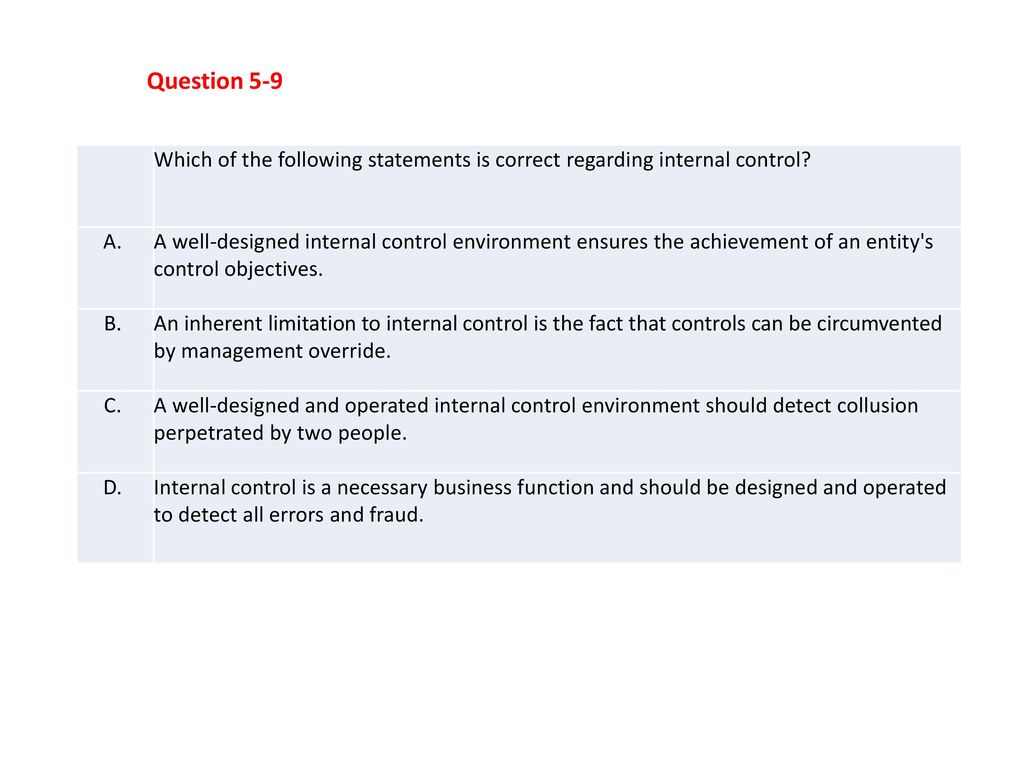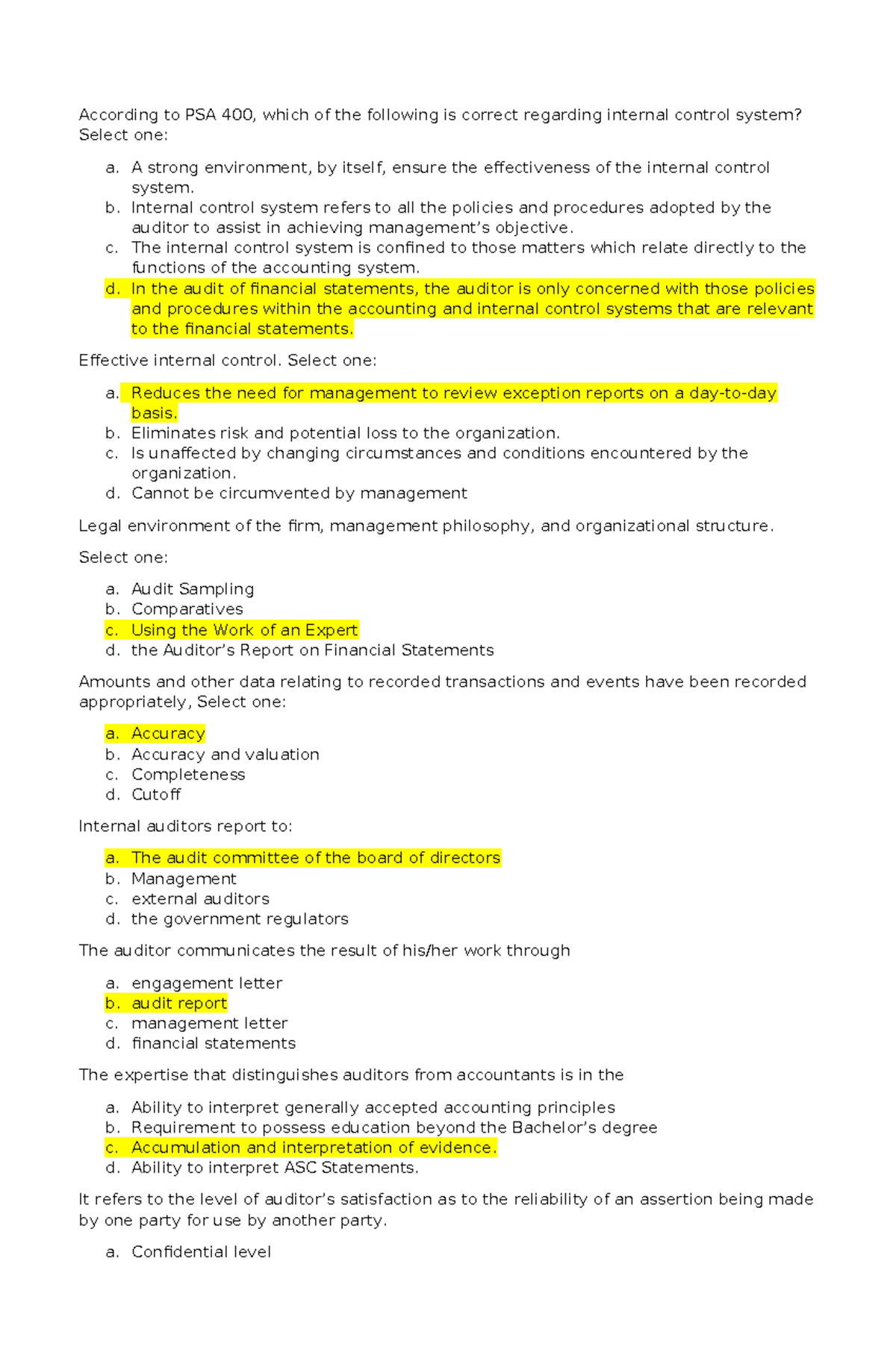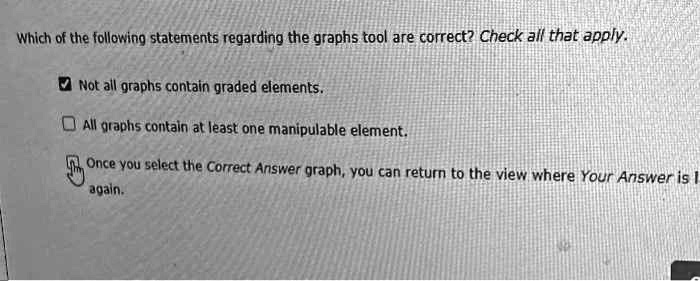Which Of The Following Statements Is Correct Regarding Internal Control

In the labyrinthine world of corporate governance and financial reporting, a seemingly simple question regarding internal control can unravel complex issues. The correct understanding and application of internal control principles are not merely academic exercises but rather foundational pillars that ensure accurate financial statements, safeguard assets, and maintain operational efficiency. The consequences of misunderstanding or neglecting these principles can be devastating, leading to financial misstatements, regulatory penalties, and reputational damage.
This article aims to dissect the core components of internal control, providing clarity on its definition, objectives, and application. We will delve into the intricacies of assessing internal control effectiveness, highlighting common pitfalls and best practices. By exploring these facets, we hope to equip readers with a robust understanding of this critical element of organizational management.
Defining Internal Control
Internal control is broadly defined as a process, effected by an entity’s board of directors, management, and other personnel, designed to provide reasonable assurance regarding the achievement of objectives relating to operations, reporting, and compliance. This definition, popularized by the COSO framework, emphasizes that internal control is not a single event but a continuous process integrated into an organization's operations.
It's crucial to understand the inherent limitations of internal control. No system, no matter how well-designed, can provide absolute assurance of achieving its objectives. Internal control systems are susceptible to human error, collusion, management override, and unforeseen circumstances.
The Five Components of Internal Control
The COSO framework identifies five interrelated components of internal control, each contributing to the overall effectiveness of the system:
Control Environment
The control environment sets the tone of an organization, influencing the control consciousness of its people. It is the foundation for all other components of internal control, providing discipline and structure. Factors that influence the control environment include the integrity, ethical values, and competence of the entity's people; management's philosophy and operating style; organizational structure; assignment of authority and responsibility; and human resource policies and practices.
A strong control environment fosters a culture of ethical behavior and accountability. Without it, even the most well-designed controls can be undermined.
Risk Assessment
Risk assessment involves identifying and analyzing relevant risks to the achievement of the organization's objectives. This component involves establishing clear objectives, identifying internal and external risks, analyzing the significance of those risks, and determining the likelihood of their occurrence.
Effective risk assessment allows organizations to prioritize their control activities and allocate resources accordingly. It's not about eliminating all risks, but rather managing them to an acceptable level.
Control Activities
Control activities are the actions taken to mitigate risks to the achievement of objectives. These activities can be preventive or detective and encompass a wide range of actions, such as authorizations, reconciliations, performance reviews, and segregation of duties.
Segregation of duties is a fundamental control activity that aims to prevent fraud and error by dividing responsibilities among different individuals. Ideally, no single person should have complete control over a transaction from start to finish.
Information and Communication
Information and communication are essential for ensuring that all relevant parties have access to the information they need to carry out their responsibilities. This component involves capturing and communicating information in a timely manner, both internally and externally.
Effective communication channels ensure that employees understand their roles and responsibilities and that management is aware of any control deficiencies. This includes open communication between management and the board of directors.
Monitoring Activities
Monitoring activities involve ongoing evaluations, separate evaluations, or some combination of the two, to ascertain whether each of the five components of internal control is present and functioning. Ongoing monitoring activities are built into the normal recurring activities of an entity, while separate evaluations are conducted periodically by an independent party.
Monitoring helps to identify weaknesses in internal control and to take corrective action. It's a continuous process of improvement.
Common Misconceptions About Internal Control
One common misconception is that internal control is solely the responsibility of the internal audit department. While internal audit plays a critical role, internal control is everyone's responsibility, from the board of directors to the newest employee.
Another misconception is that internal control is only relevant for large organizations. In reality, internal control is just as important for small businesses, although the specific controls may be simpler and less formal.
A third misconception is that internal control is a one-time event. As mentioned earlier, internal control is a continuous process that must be constantly monitored and updated to reflect changes in the organization's environment.
The Importance of Documentation
Proper documentation of internal control is crucial for several reasons. It provides evidence that controls are in place and operating effectively. It facilitates training and onboarding of new employees. Furthermore, it aids in identifying weaknesses and areas for improvement.
Documentation should include a description of the controls, the individuals responsible for performing them, and the frequency of their execution. It should also include evidence of the controls' effectiveness, such as sign-offs or exception reports.
Looking Ahead
In today's rapidly changing business environment, the importance of robust internal control cannot be overstated. Organizations face increasing regulatory scrutiny, heightened cybersecurity threats, and growing pressure to maintain ethical behavior. The need for strong internal control systems is only going to intensify.
The challenge for organizations is to not only implement effective internal controls but also to continuously monitor and adapt them to address emerging risks. This requires a commitment from top management, a culture of accountability, and a willingness to invest in training and technology.
Ultimately, the effectiveness of internal control depends on the people who design, implement, and operate the system. Organizations must foster a culture of ethical behavior and provide employees with the tools and training they need to do their jobs effectively. By doing so, they can create a strong foundation for long-term success.


















